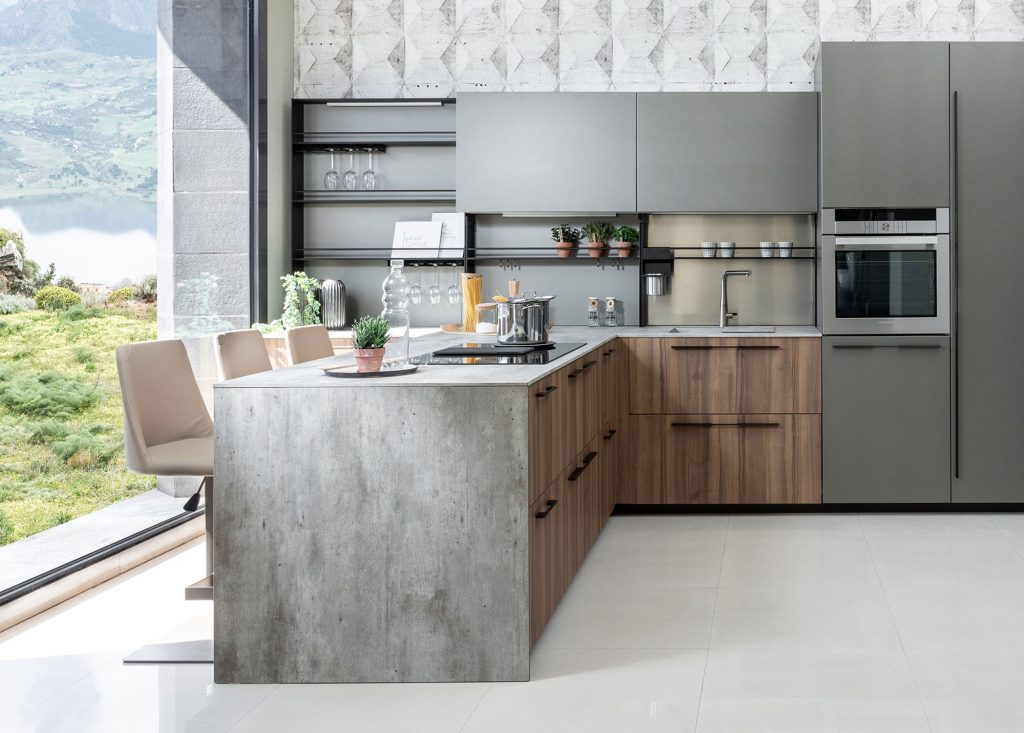Various environmental certificates are an important means of verifying the environmental responsibility of laminates. In the overall environmental rating of a building, these certificates can bring significant additional points, especially in the categories of materials and indoor air quality. Certified products play a key role in verifying and documenting the environmental performance of a building in sustainable construction projects.
How do the environmental certifications of laminates affect the environmental rating of a building?
In the environmental rating of buildings, the choice of materials plays an important role in the overall assessment. Environmentally certified laminates improve the overall rating of a building, especially in terms of indoor air quality, material efficiency and sustainability of raw materials. Certificates provide objective proof that the materials used meet certain environmental criteria.
When applying for an environmental rating such as LEED or BREEAM, documentation is key. Environmental certification of laminates provides clear and reliable evidence of the environmental performance of products. This makes it easier to obtain points and can speed up the rating process when a third party has already carried out an environmental impact assessment of the materials.
What environmental certificates are available for laminates?
The quality and environmental friendliness of laminates can be verified by a number of different certificates. The most important of these are certificates that verify the origin of wood raw materials and systems that measure the emissions and other environmental impacts of products.
FSC and PEFC are internationally recognised certificates that guarantee the responsible origin of the wood raw material used in laminates. The FSC (Forest Stewardship Council) ensures that the wood comes from sustainably managed forests. PEFC (Programme for the Endorsement of Forest Certification) focuses on the verification of sustainable forest management by small forest owners.
Blue Angel is a German eco-label that sets strict criteria for the chemical content and emissions of materials. For laminates, it ensures, among other things, that formaldehyde emissions are minimised and prohibits the use of certain harmful substances.
Nordic Swan i.e. the Swan label sets comprehensive criteria for the whole life cycle of a product. For laminates, it takes into account the origin of raw materials, the energy efficiency of the manufacturing process and emissions.
M1 emission classification is a Finnish system that measures indoor air emissions from building materials. M1-rated laminates meet stringent requirements for emissions of VOCs, formaldehyde and ammonia, making them an excellent choice for public spaces.
How are environmental certificates for laminates scored in LEED and BREEAM schemes?
LEED (Leadership in Energy and Environmental Design) and BREEAM (Building Research Establishment Environmental Assessment Method) are internationally recognised environmental rating systems for buildings, where material choices have a significant impact on the overall score.
Under LEED, environmentally certified laminates score points in several categories. In the "Materials and Resources" section, FSC-certified laminates can score points in the category of responsible wood sourcing. In addition, in the "Indoor Environmental Quality" section, low-emissivity materials such as M1-rated laminates earn points for improving indoor air quality.
Under BREEAM, points are accumulated in particular in the "Materials" and "Health and Wellbeing" categories. Responsible sourcing of materials, as evidenced by FSC/PEFC certificates, plays a key role. Low-emission materials, as represented by Blue Angel or M1 certificates, for example, improve scores in the category of indoor air quality.
| Certificate | LEED impact | BREEAM impact |
|---|---|---|
| FSC/PEFC | Materials and Resources | Materials |
| M1 emission classification | Indoor Environmental Quality | Health and Wellbeing |
| Nordic Swan | Materials and Resources / Indoor Environmental Quality | Materials / Health and Wellbeing |
| Blue Angel | Indoor Environmental Quality | Health and Wellbeing |
The importance of the environmental impact of laminates in sustainable construction
Environmentally certified laminates are an essential part of sustainable construction, supporting the ecological footprint of buildings throughout their life cycle. Material choices reflect both the in-service performance of a building and its long-term environmental impact.
From a sustainable construction perspective, environmental certification of laminates provides assurance that materials meet strict environmental criteria. This enables responsible choices to be made at the design stage and lays the foundation for an ecologically sustainable building.
As practical advice for choosing environmentally friendly laminates, we recommend:
- Compare different certificates according to the needs of the project - for example, in public spaces, the indoor climate rating can be particularly important
- Consider the environmental rating you want the building to achieve and choose the certificates that will help you achieve it
- Pay attention to the whole life cycle of materials, not just the environmental impact of the manufacturing stage
- Carefully document the certificates of the selected materials for environmental classification
Eco-certified laminates not only offer a more ecological alternative, but can also improve the comfort and healthiness of spaces. Low-emissivity materials contribute to better indoor air quality, which is particularly important in places such as schools, nurseries and other public spaces.
At Lorella, we are committed to providing a wide range of environmentally certified laminates that meet the most stringent sustainable building requirements. Our experts will be happy to help you find the right environmentally certified materials for your project.

